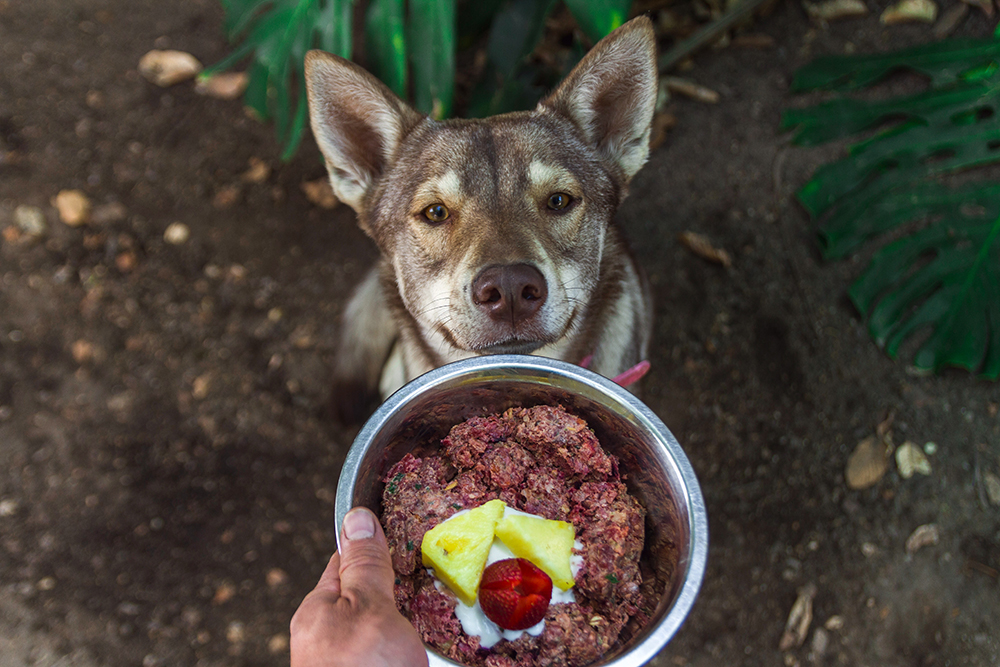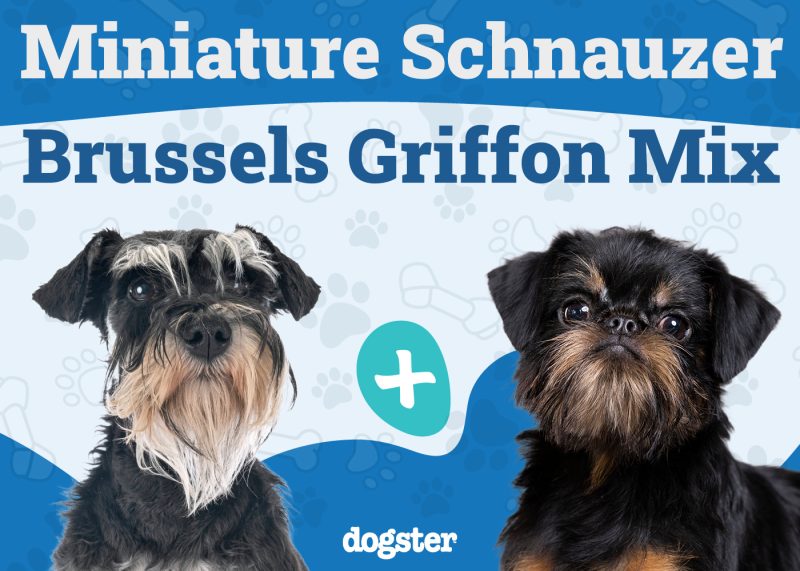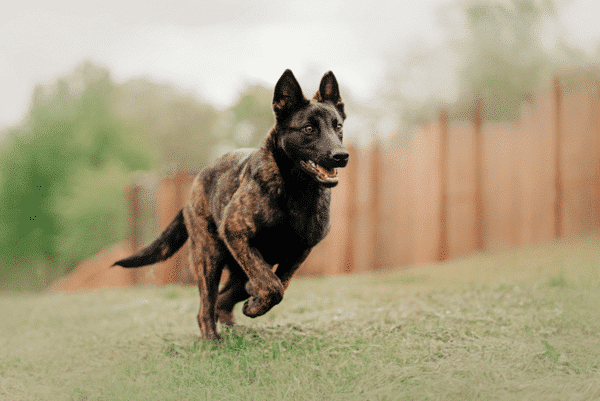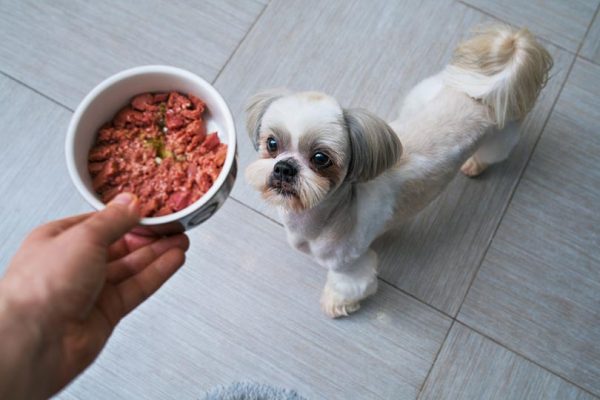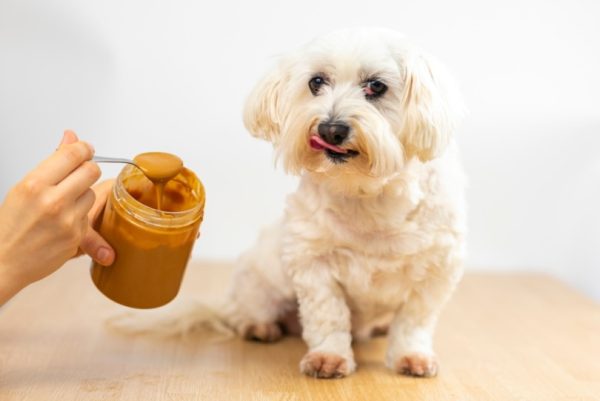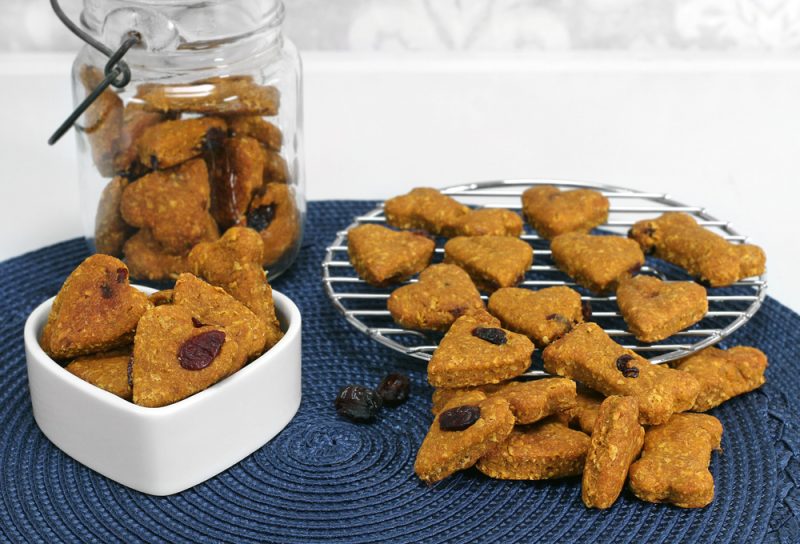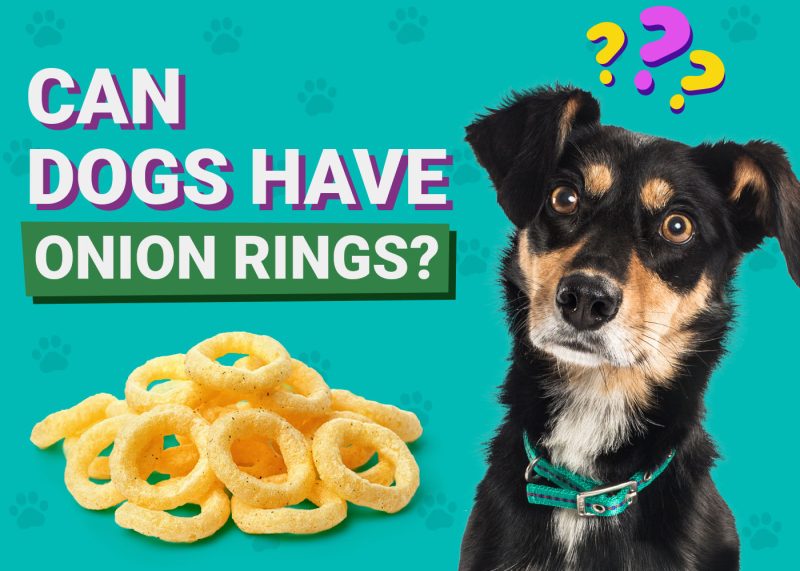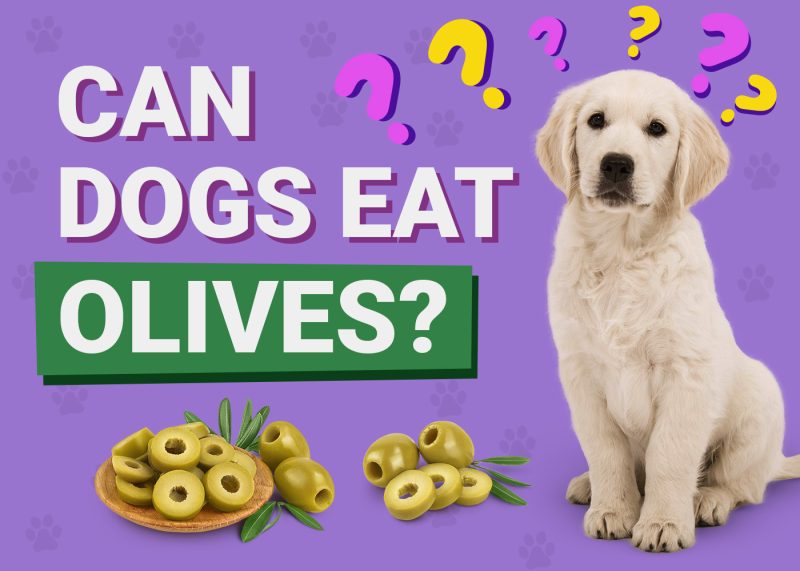In this article
Raw food diets for dogs are surrounded by controversy, but they’re becoming more popular among dog owners. These diets aren’t new. Racing Greyhounds and sled dogs have been eating raw diets for decades, and an Australian veterinarian, Ian Billinghurst, proposed the Bones and Raw Food, or Biologically Appropriate Raw Food (BARF) diet in 1993 as a solution to give dogs the food of their wild counterparts.
If you’re considering a raw food diet for your dog, here’s everything you need to know about the risks, benefits, and science behind the diet—as well as how to get started properly and safely.

What Is a Raw Food Diet?
Raw dog food diets vary but generally include bones, muscle meat, organ meat, raw eggs, some vegetables, some fruits, and some dairy.
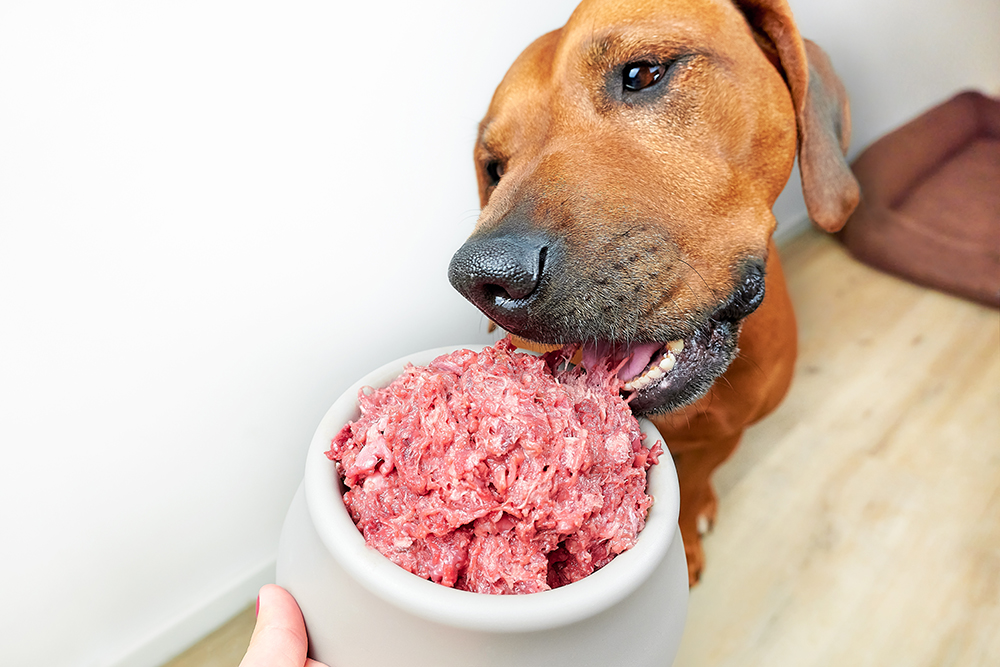
What Are the Different Types of Raw Food Dog Diets?
There are several types of raw diets, including:
- Home-prepared raw meat-based diets (RMBDs): Uncooked diet with muscle meat, bones, organ meats, raw eggs, vegetables, fruit, and some dairy. These are generally prey-model and BARF diets, which mimic a canid’s natural diet in the wild with 80% muscle meat, 10% raw bone, and 10% organ meat or 70% muscle meat, 10% raw bone, 7% vegetables, 5% liver, 5% other organ, 2% seeds or nuts, and 1% fruit, respectively.
- Commercial raw frozen diets: Diets that may or may not be complete and balanced, often including a range of protein sources, bones, vitamins and minerals, and fruits and vegetables. Freezing is believed to kill a some
- Commercial freeze-dried diets: Diets that may or may not be complete and balanced and have been frozen under a vacuum to remove nearly all moisture, killing some bacteria and leaving the nutrients intact.
- Commercial dehydrated diets: These diets may or may not be complete and balanced and have been heated slowly to remove nearly all moisture. The effect of low, slow heating on nutritional quality or bacterial contamination is not known.
Where Is It Used?
The rise of raw food diets for dogs is often from owners who want their dog’s food to resemble that of their wild counterparts. They may believe that raw food provides more nutrients than commercial dry kibble or canned foods that have been through high-heat cooking and that raw food diets will improve their dog’s health.
Though some veterinarians are proponents of the raw food diet, many mainstream veterinarians do not agree. The Food and Drug Administration (FDA) issued a warning about the risks of raw pet food. The risks of raw food diets have been well documented by peer-reviewed studies in veterinary journals. The general consensus is that the benefits of raw are minimal compared to the potential risks.1
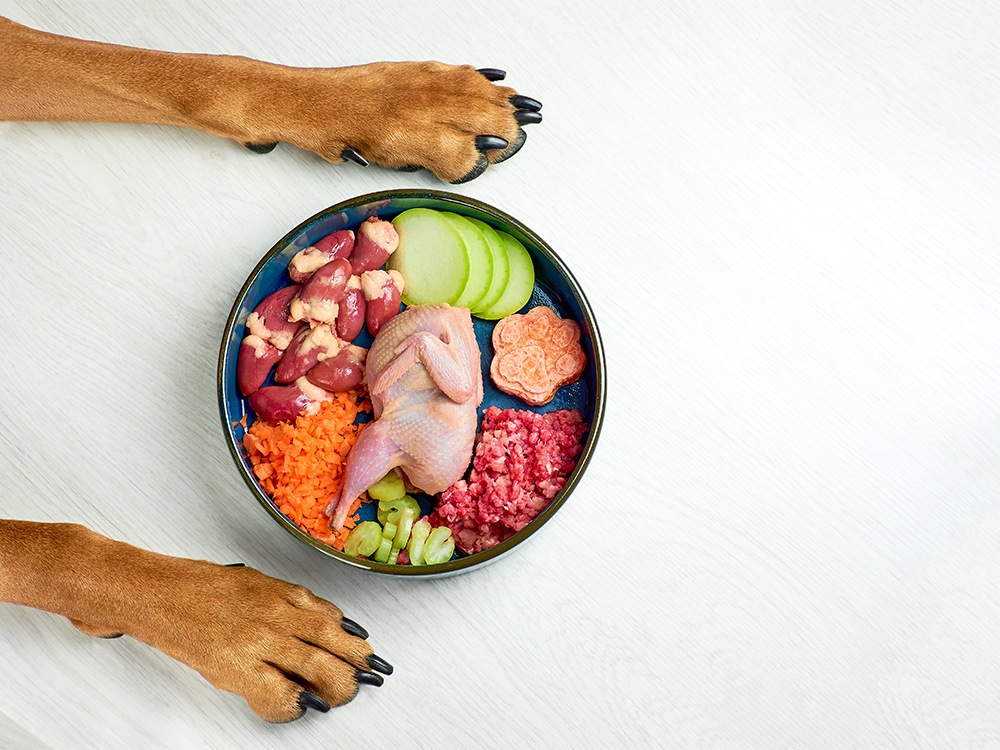
Advantages of Raw Dog Food Diets
Proponents of the raw food dog diet claim that it promotes healthier skin and coats, cleaner teeth, higher energy levels, and smaller stools, indicating that dogs are using more of the available nutrients in the food. When Billinghurst promoted the BARF diet, he suggested that adult dogs would thrive on an evolutionary diet based on what canines ate prior to domestication and that grain-based commercial foods can be harmful to dog’s health.
Disadvantages of Raw Dog Food Diets
There are many risks to raw dog food diets, the biggest being the risk of bacterial contamination from handling and feeding raw meat. Both dogs and humans are susceptible to Salmonella and other bacterial contamination that can cause serious illness. Parasites like toxoplasma and tapeworms that infect dogs can also be contracted from raw meat.
Bones present additional risks to dogs in the short- and long-term, including the risk of choking, breaking teeth, or experiencing an intestinal blockage or perforation. In addition, if the raw diet isn’t balanced properly, it can lead to nutritional deficiencies.2
Raw food diets are also expensive and can require a lot of planning and preparation, which may be too much for the average pet owner. It’s also not appropriate for all dogs, so owners considering raw should consult with a veterinarian to ensure it’s safe and done properly.
If you need to speak with a vet but can't get to one, head over to PangoVet. It's an online service where you can talk to a vet online and get the personalized advice you need for your pet — all at an affordable price!

How to Get Started With a Raw Dog Food Diet
If you want to feed your dog a raw dog food diet, Association of American Feed Control Officials (AAFCO) approved commercial options may be the safest option. Choosing a complete and balanced raw food diet reduces the risks of nutritional deficiencies and takes some of the stress out of getting the macro- and micro-nutrient content correct.
If you want to feed your dog a homemade raw diet, consult with a veterinary nutritionist and your regular vet to make sure the diet is balanced, complete, and appropriate for your dog. It’s easy to make errors that can compromise your dog’s health.
Otherwise, here are some recommendations to ensure you’re feeding raw as safe as possible:
- Thoroughly wash your hands with soap and water after handling raw dog food.
- Clean and disinfect all surfaces and objects that come in contact with raw food.
- Keep raw food frozen until you’re ready to feed, then thaw in the refrigerator, not at room temperature, to limit bacterial growth.
- Keep raw food separate from other food.
- Use separate cutting boards, storage containers, and dishes for your raw dog food.
- If your dog doesn’t eat, throw away the leftovers.
- Don’t allow your dog to lick you.
- Wash with soap after touching your dog.
- Make sure you’re choosing quality ingredients.
- Feed only high-quality meat.

Frequently Asked Questions (FAQ)
Are Raw Meat Diets Good for Dogs?
As yet there are no clinically proven benefits of a raw food diet, but there are hazards and risks. Some owners see benefits like a healthier coat, but many quality cooked dog foods cause a shiny coat.
Do Vets Recommend a Raw Meat Diet for Dogs?
The American Veterinary Medical Association discourages feeding raw or undercooked animal protein, including eggs and dairy, to dogs and cats because of the risks to human and animal health.
What Dogs Shouldn’t Have Raw Diets?
Even supporters of raw diets indicate that they may not be safe for all dogs. Dogs that have kidney disease typically shouldn’t have high-protein diets like raw diets, commercial or otherwise. Dogs that have pancreatitis or other digestive issues may not benefit from a raw diet.
In addition, dogs with suppressed immune systems, such as dogs with cancer, on chemotherapy, or on immunosuppressive medications, should not have raw food. Very young and old dogs tend to have weaker immune systems in general, so we recommend they aren’t exposed to the pathogens in raw diets.
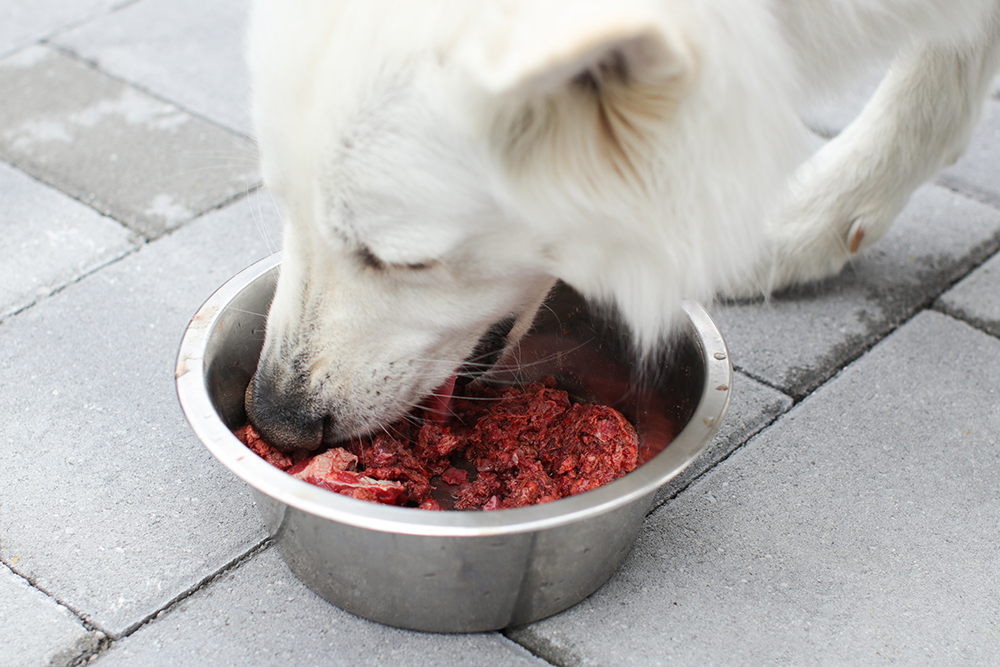

Conclusion
Raw food diets are controversial for good reasons. There are many risks to feeding raw food to dogs, including risks to human health, without many concrete benefits or the backing of mainstream veterinarians. If you choose to feed raw food to your dog, make sure to consult with your vet and a veterinary nutritionist to ensure you’re doing the best for your dog’s health and wellbeing.
See Also:
Featured Image Credit: Recless-media, Shutterstock
